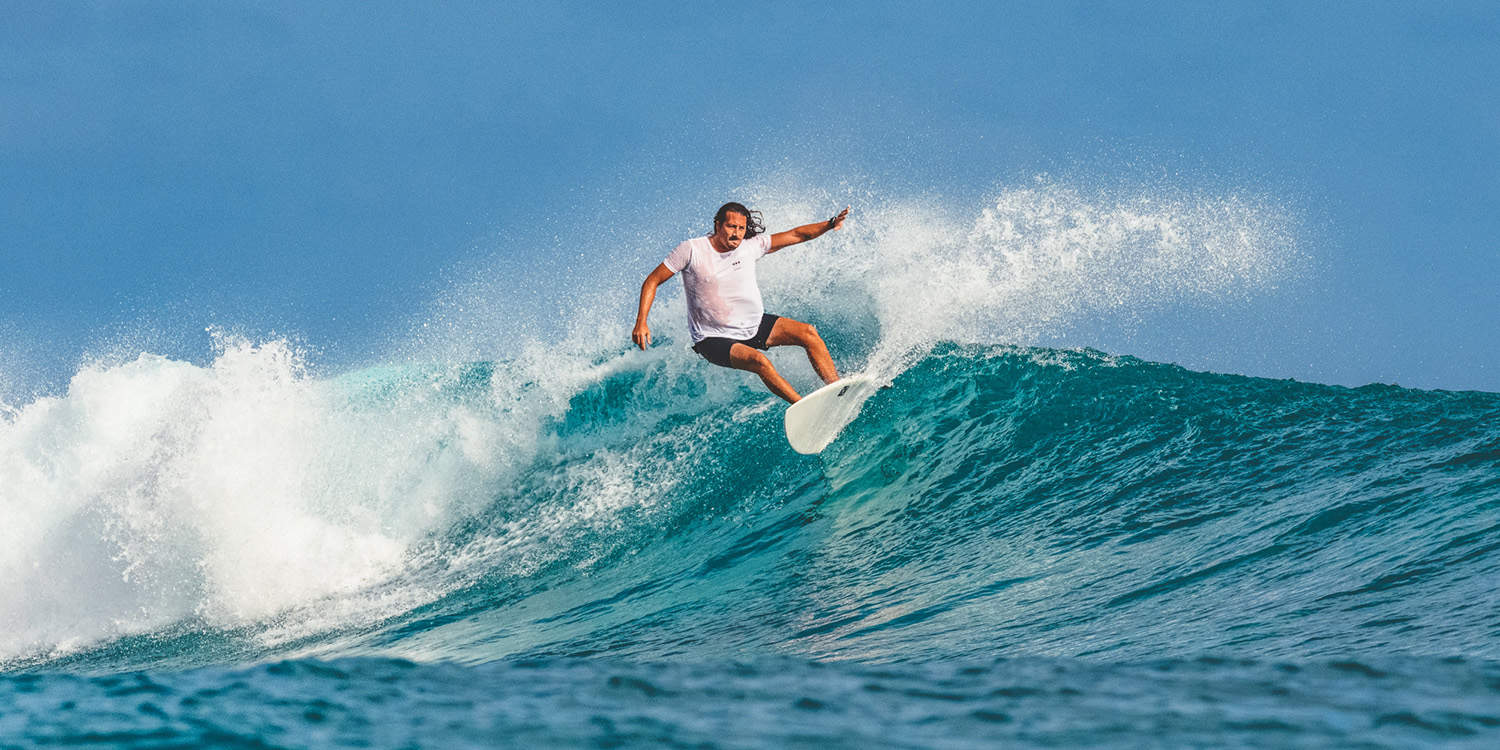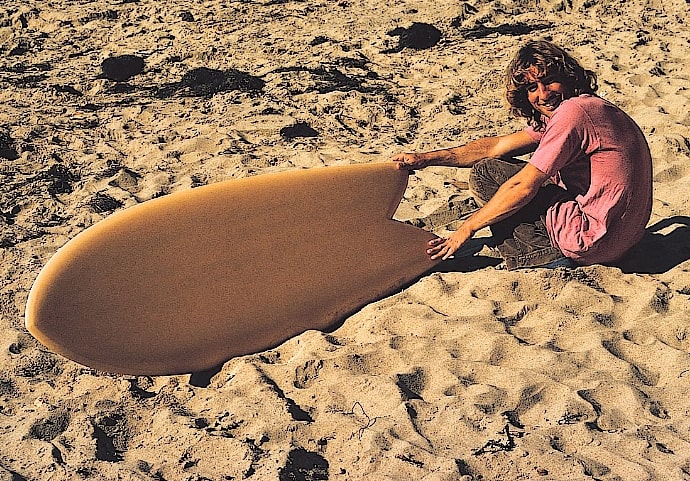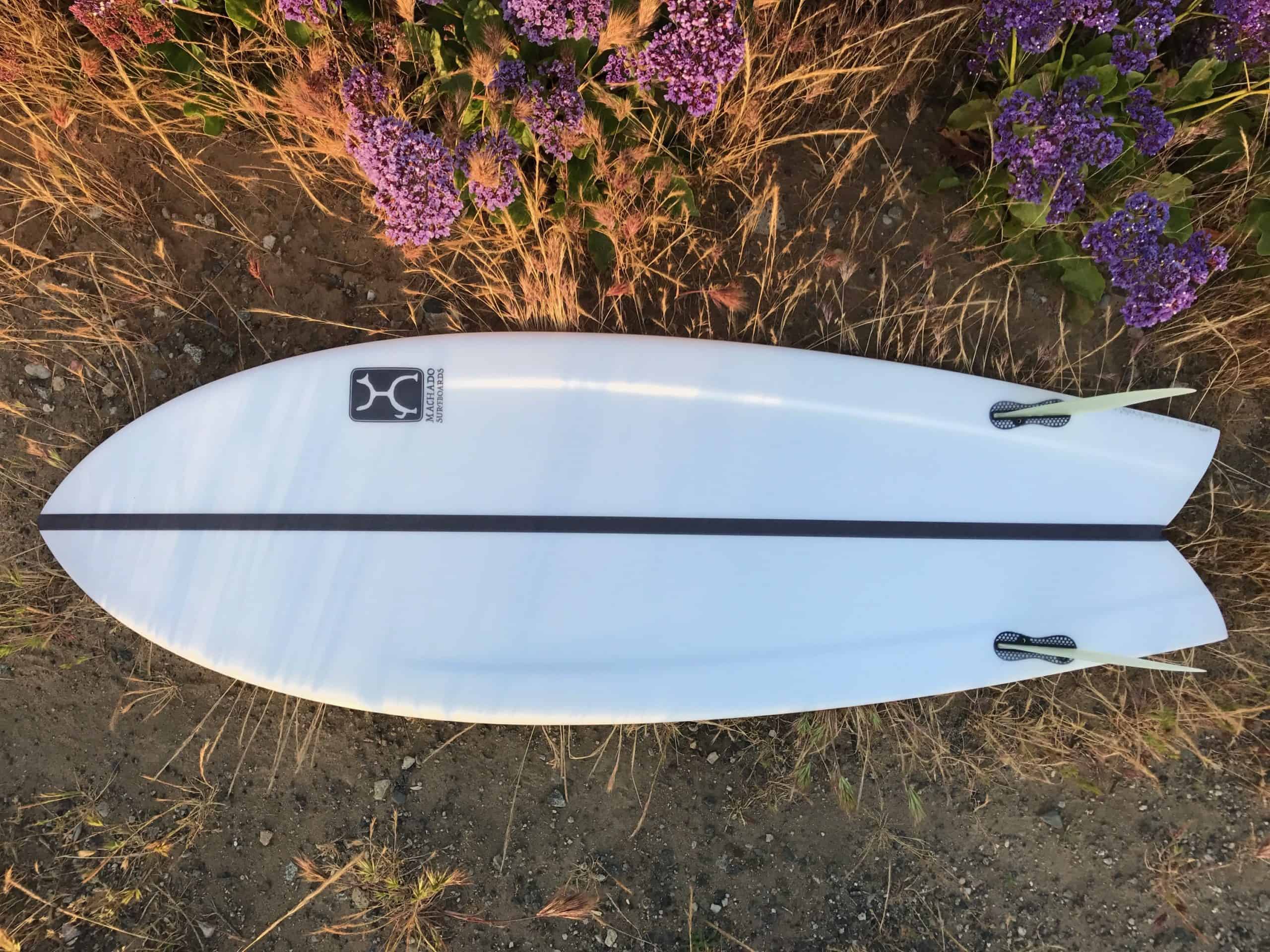Every type of surfboard has been designed for specific purposes on the surf. A fish surfboard may be great for some things, and not so great for others. It is best to know what your board is meant to be used for you so can get the best surf out of it.
The fish surfboard is great for intermediate to advanced surfers and does well in small surf conditions. It has thickness, volume, and a flat rocker which aids in its speed while paddling. Fish boards range from 4’ft to 6’ft in length with their hybrid cousins having up to 8’ft. Fins on a fish also give the advantage of planned speed.
The fish is a fairly new board being designed in 1967. It was designed to have the width and thickness of a longboard and a length closer to a shortboard. Fish boards hold many features and offer ease in situations where other boards don’t.
The Fish Surfboard
Fish surfboards are loved by many surfers and have such a great history behind them. These boards have come a long way and have revolutionized the way we surf on smaller waves. The fish surfboard has been developed into a hybrid and many have different fin set ups.
Most surfers like to use the fish on warmer days or in the summer when the waves are a mess, or small. Fish boards are great at getting into small waves quickly.
Shortboards normally have a pointed nose and a longboard has a rounded nose. Fish boards combine the two with a bit of a point on a wide nose to give the maneuverability and stability of both boards.

As a consequence of the high volume that comes with the greater width and the thickness, the fish is slower than a shortboard. It makes up for the lack of speed that comes with the added volume by having a low rocker. A low rocker allows the water to move quickly under the board making up for the lost speed.
Most surfers will agree it is good to have a fish surfboard in your quiver of boards. They are great boards for the surfer that may want to have the buoyancy and width of a bigger board, but still keep the looseness and maneuverability of a shorter board. Fish boards are also great for surfers who are heavier and need more flotation, but do not want to compromise on the looseness that surfers get from a shortboard.
Fish surfboards are great and very versatile making them many surfers’ favorite boards. With every good thing usually comes a few downfalls, but with the fish, there are more pros than cons to factor in.
History Of The Fish Surfboard
In 1967 Steve Lis shaped the first fish surfboard out of a broken longboard. Steve intended to kneeboard around the hollow breaks of San Diego. After trying it out and having his friends give it a try, he perfected his design a little more.
Steve had his friend Jeff Ching try out his new 4’7” board. Jeff Ching carved the first stand up wave on a fish surfboard. Jeff asked Steve to make him a board that was a little larger and more adaptable. Steve made him the first ever 5’5” fish board.
The World Championship for surfing was held in San Diego in 1972. Two local surfers, David Nuuhiwa and Jim Blears, smashed the competition leaving them in the ocean mist, while on their fish surfboards. Everyone was amazed and started surfing with new fish boards and implementing new designs to handle small waves and eventually came up with the ones we see today. It’s been sweet surfing history since then.
What Is A Fish Surfboard?
A fish surfboard, or a board with a swallow tail, is a board with a certain tail set up. The fish board has two fins on its swallow tail. Fish boards also boast a tri, twin, and quad swallow tail each with its own purpose.
Fish boards are made to have as much buoyancy as a longboard but not the length. These boards are typically between 4’ to 6’ feet in length with a higher volume similar to a longboard for buoyancy. With a wider outline throughout the deck, tail, and nose these boards tend to have thicker rails.
The most common fish board is the retro fish. This board tends to be on the smaller side with boards as small as 4’6” in length. A retro fish offers great maneuverability, floatation, stability, and speed. Retro fish boards are well suited for small to medium surf.
Is The Fish Misunderstood?
While the fish is known mostly for getting into the smaller waves, it is a little misunderstood with the misconception that it won’t do well in larger, hollow, and steep waves. It is actually a very versatile board and was initially made to surf the hollow and steep waves.
Retro fish boards were made to surf the large hollow breaks of San Diego. The straight rail, wider outline, twin pin tails, and a wider nose gave the fish its power and speed. Fish boards allow for a stronger paddle because of their wider outline and nose giving them the power and speed needed to tough it out in the larger waves.
Swallow tail, or “twin pins” tail is a split tail that has two points while still retaining more surface area. With a wider tail, the fish holds a great deal of speed in the softer parts of a wave. This advantage allows the fish to work well both in small waves and in steep hollow waves.

What Is A Hybrid?
Many surfers find that they tend to avoid the fish in certain situations because they need a longer board. Hybrid styles vary in length from 6’ft to 8’ft. This makes the fish category of surfboards more versatile and favorable among many.
When you bring the hybrid fish into the picture you have the maneuverability of the shortboard and the width and thickness of a retro fish. There are many different variations of fish and hybrid boards to choose from. Hybrids may or may not have tails, but either way, they shine in small scale surf.
Fin Set Ups Of The Fish
One of the most fascinating traits of the fish board, is its uniqueness of having different tail set ups. The quad fin, twin fin, and tri fin all add their own feel to the board. You will want to choose your set up by what performance you will need and the surf you will be on.
Quad fins give surfers excellent speed and the ability to make quick turns. These fins do well in small surf and offer more control on the turn. Quads are not only for the small waves though, they do well with hollow waves as well.
Your typical twin fin set up is a favorite among surfers because it has a wider tail width and gives faster execution when rushing the wave. The twin fin has great speed and looser turning, while being more stable than a single fin. Twin fins are best used in clean, small, and medium-sized surf.
Tri set up, or thruster, was designed by Simon Anderson in 1980 after getting frustrated with the hold of the larger waves. Simon added a middle fin more to the rear of the board between the twin fins. This allowed for greater stability, maneuverability and allowed for high-performance surfing. Thruster set ups do well in large waves and smaller surf.
Is The Fish A Beginners Board?
In order for a beginner to learn to surf, a few basic necessities on the water are needed. Without these basic needs the beginner would tend to spend most of their time struggling in the water attempting to get to waves, as opposed to quickly getting from wave to wave. The more waves a beginner can hit, the more practice they get in and the quicker they learn.
To be able to get from wave to wave easily, beginners need to be able to float on the water to easily glide to the next wave. To do this, a board with more length, width, and volume is needed giving the board more buoyancy.
Beginners will need to learn foot placement and to pop up on a board. A longer board with more width is the best option. The best board for a beginner is a longboard because it has more length, buoyancy, width, and stability to allow a beginner to stay on top of the water and pop up on the board.
As great as the fish boards are, they are not ideal for a beginner. While they do have more buoyancy and width than a shortboard, it is not enough for a beginner to learn with. A fish board will have a beginner struggling more in the water than paddling from wave to wave and popping up.
Pros Of A Fish Surfboard
- Made to surf on smaller waves from waist high to overhead waves
- Can tolerate warm summer days when the waves are mainly flat
- Fish boards have more speed than longboards, minimals, and foamies
- Fish have great buoyancy because of thicker rails and width, giving them more volume
- Do not have to sacrifice traction on a wave for speed. It does well with both.
- Both retro and hybrid are easy to paddle with
- Retro and hybrids are wider boards allowing for easier pop ups
- Retro fish and hybrid boards both do great during turns on steep waves
- The tail on the fish allow for a wonderful planned speed
- Gives great control and maneuverability on small or mushy waves
Cons Of A Fish Surfboard
- Fish are not as maneuverable as a shortboard
- Because of the high volume that comes from greater width and the thickness, fish boards are slower than shortboards
- More difficult than larger boards to catch waves
- Not an ideal board for beginners because they do not have as much stability, glide, and length as a longboard gives
- Beginners aren’t likely to catch enough waves to practice sufficiently
- Fish boards damage easily if they are not an epoxy version
- Fish boards do not have good hold while moving fast because of their thicker rails
- The retro twin does not do well with tight turning because of more surface and rake area

